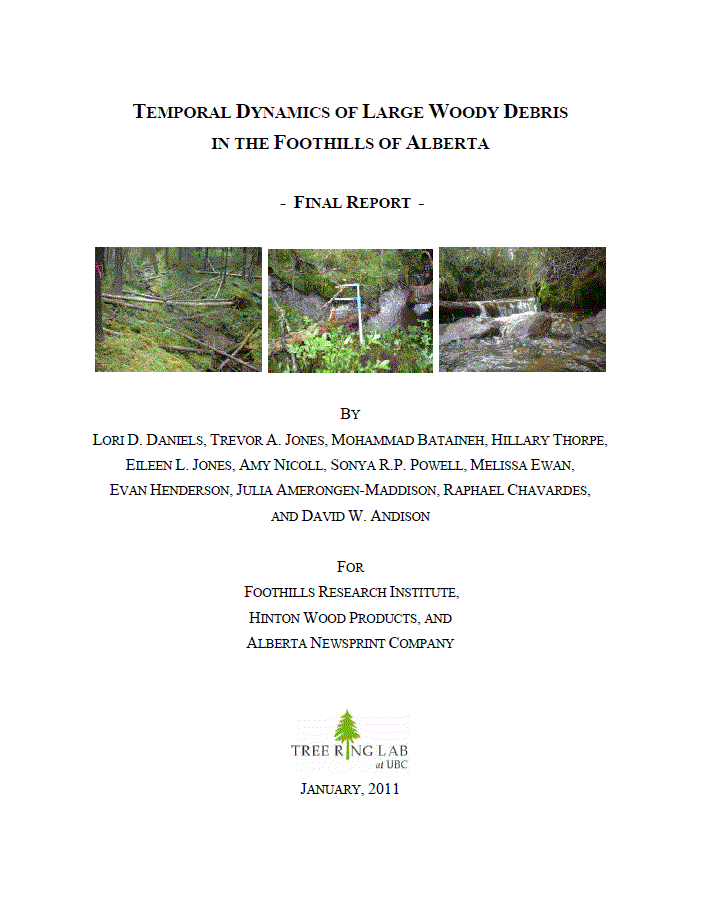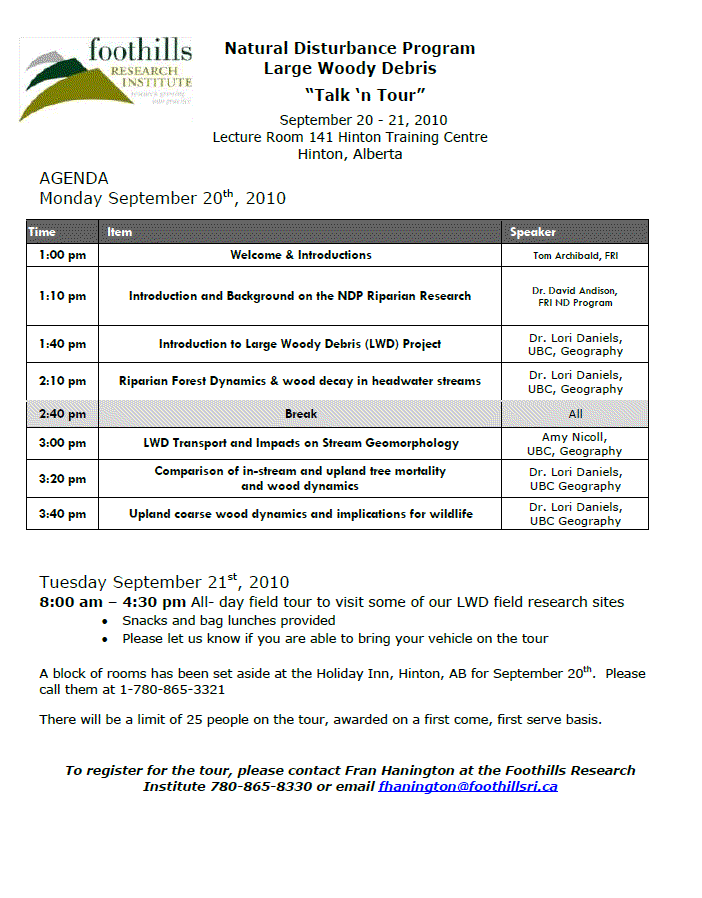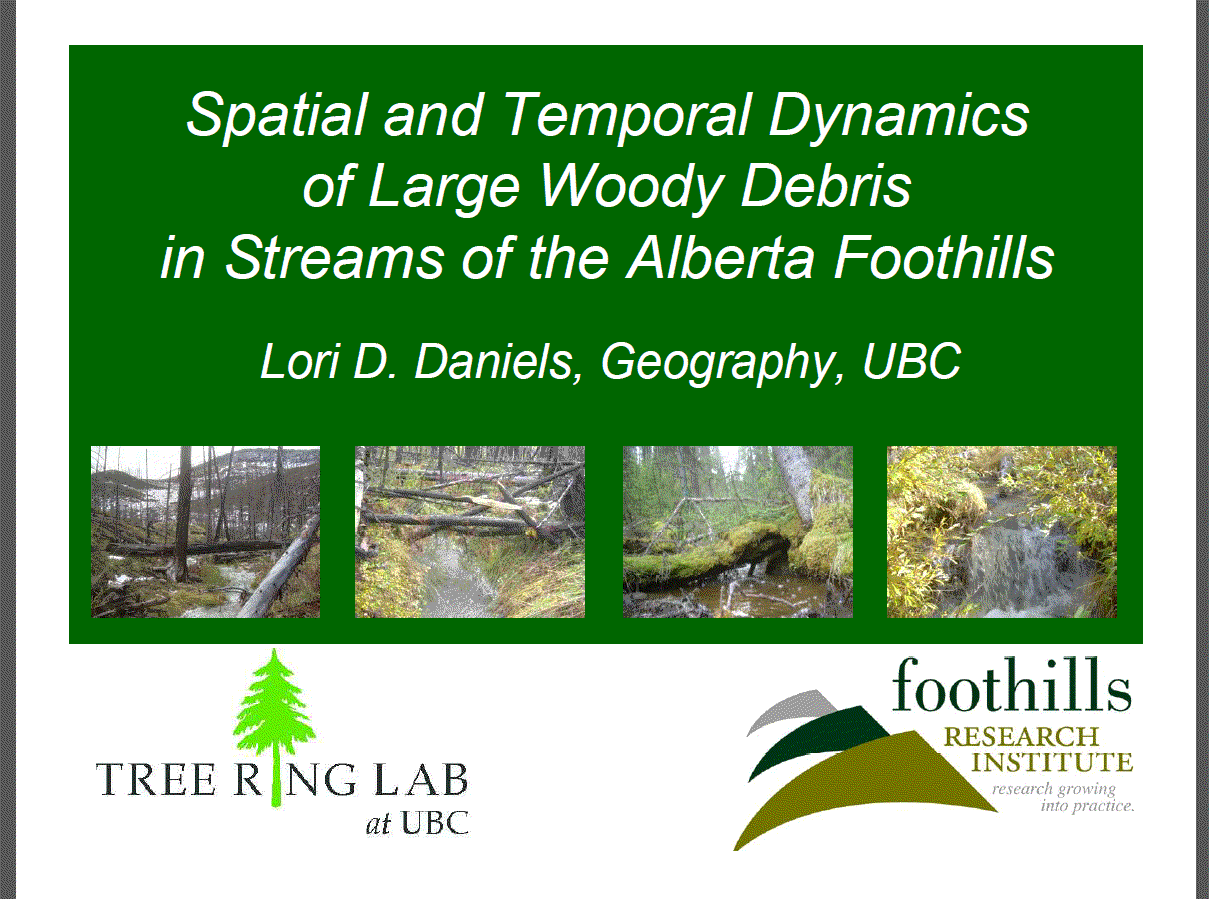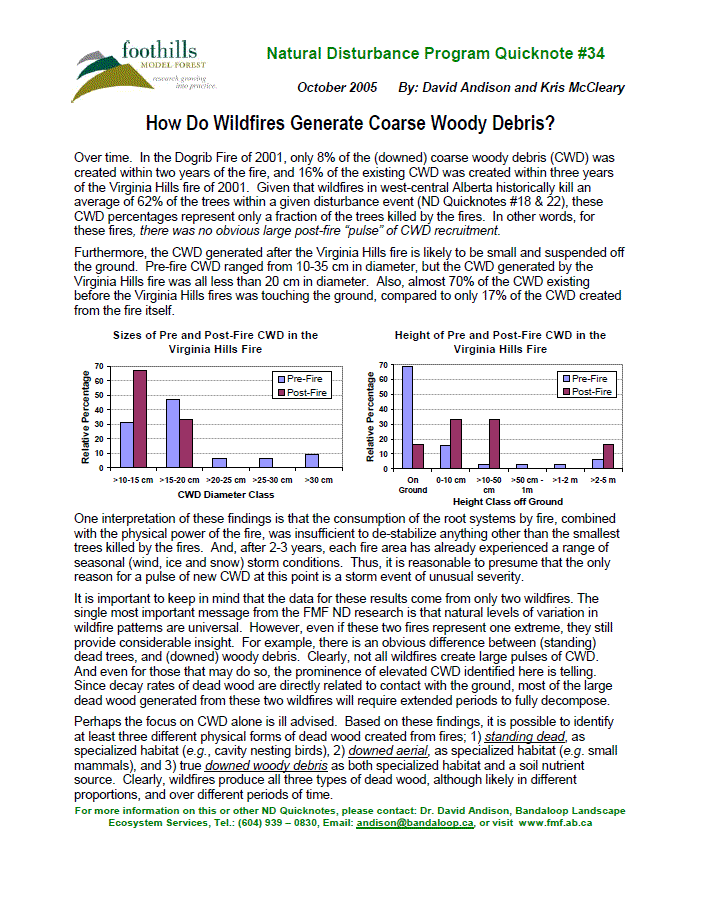Understanding Large Woody Debris and Development of a Decision Support Tool
Disturbance is a necessary process that generates dead wood important for stream health. This project seeks to better understand the dynamics of large woody debris in small streams.
An output of this project is a decision support tool will be designed for practitioners who are interested in evaluating how and to what degree various management choices influence the amount and type of large woody debris, and how that relates to historical levels.
As part of the outcome of a pivotal workshop co-hosted by the fRI Research Natural Disturbance and Fish and Watershed Programs on riparian zone management in 2003, our partners agreed to invest in research to help us better understand of the dynamics of large woody debris (LWD) in small streams.
Riparian management poses a unique management problem in boreal and foothills landscapes. On one hand, cultural activity such as tree harvesting can do considerable damage to both the aquatic and terrestrial parts of the ecosystem. On the other hand, eliminating disturbance from riparian zones through avoidance and fire control has had long-term negative consequences in other forest types.
Disturbance is a critical and necessary process that (among other things) generates dead wood that are important for creating aquatic habitat, mitigating the impacts of flood, and collecting in-stream sediment.
Selected Resources
- Jones, T.A., and L.D. Daniels. 2008. Dynamics of large woody debris in small streams disturbed by the 2001 Dogrib fire in the Alberta foothills. Forest Ecology and Management. 256: 1751- 1759.
- Powell, S.R., L.D. Daniels, and T.A. Jones. 2009. Temporal dynamics of large woody debris in small streams of the Alberta foothills, Canada. Can. J. For. Res. 39: 1159-1170.
- Jones, T.A. L. D. Daniels, and S. R. Powell. 2011. Abundance and function of large woody debris in small headwater streams in the Rocky Mountain foothills of Alberta, Canada. River Research and Applications. 27: 297-311.
B
- Bandaloop Landscape-Ecosystem Services












